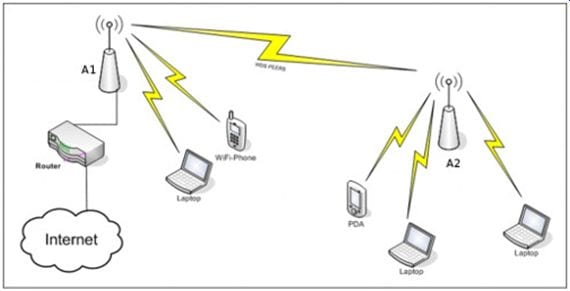Cuban “Gamers” Surrealist Internet
In a country where the internet connection has to go through government filters, where not everybody has a computer, there is a group of young people who have found a way to communicate, create forums and even play… Without the internet.
By Flavio Cabrera

HAVANA TIMES — It’s 2 AM in Havana and Anselmo’s bedroom, a young 18 year old Cuban, swarms with strange noises and conversations. However, there isn’t a party or a celebration of any sort. Anselmo is glued to his PC console and on the screen he can see the amazing landscape of “World of Warcraft”, one of the most popular Internet games right now.
There’s a hidden virtual Havana, sometime surrealist and only accessible to initiated members who have a computer and whose everyday activities are just a phantasmagoria, because “their” more “real” world lies in their videogames, where distances are measured in megabytes and they can be heroes and fighters in an imaginary universe.
When the sun comes back up over Havana’s Malecon, ash trays are full, coffee cups are empty and there are winners. Just another day for Cuban gamers, who live passionately for videogames on a network.
But, in a country where only state-run companies and professionals authorized by the government have the internet at home, Anselmo doesn’t have access to the King of networks. Nevertheless, he plays every night on an underground network which is called “SNET”.
What is SNET? It’s a group of local networks which has been created and structured by ordinary Cubans, without any help from a government institution. How do they do it? Very simple. You have a computer, they find a way to get hold of a “switcher”, a small electronic device which allows them to directly connect their computer with another six, eight, twelve or more, depending on the number of outlets their computer has. If one of these computers receives a signal from another switcher, it connects it to many others, and so on, where hundreds of computers can connect to each other.
The most special thing about this surrealist intranet is that this is all done… with cables. Yup, just what you read; coax cables which travel across rooftop terraces, balconies and windows and even cross above streets! And where do they get hold of these cables, that aren’t sold in hardware stores or at normal stores, be that in dollars or in pesos?
In Cuba, over 20 years ago, when pirate distributors called “lateros” began to create homemade TV antennas so that they could pick up foreign TV channels and transmit them via cable to their users, a productive underground market for coax cables was born. You only have to have the right “contact”, the right amount of money and you can ask for however many meters you want. Normally, groups of teenagers and young people put together their money which they’ve painfully scraped together and buy all the cables they need between them.
Of course, these networks are limited to the geographical confines of a neighborhood. For example, in Havana, there’s a SNET in Old Havana, in Vedado and in Central Havana, three municipalities which are very close to one another. Every one of these can have hundreds of people connected up, and when somebody manages to connect one neighborhood’s network with another… The SNET multiplies, as Havana, according to an old census in the ‘60s, has 43 neighborhoods, which have grown disproportionately since then.
From an “underground” network to Nano
Occasionally, somebody from a local network manages to get hold of a “nano” (abbreviation of NanoStation) paying huge sacrifice. This is a WIFI device which can be used as an access point or as a client, that is to say that with two you can create a point-to-point wireless bridge. The most well-known models on the market are Chinese, manufactured by Ubiquiti or Leguang, which is cheaper. Prices are around 100 dollars (or its equivalent in CUC (Convertible Cuban Pesos).
A nano can work “wonders” in an underdeveloped country as it can connect up to different WIFI points over a distance of 10 kilometers, depending on the “nano’s” power and whether there is a direct line of vision between them, multiplying the chances of creating this “underground” network.
With all of this, SNET’s favorite resource continues to be cables, because if computers and “switchers” that make up the network aren’t connected to the Internet, they are undetectable to trackers which every government in the world uses to delve into its citizens communications on the Internet.
An “underground” digital culture?
For Cuban “gamers”, long ago were the days of going to clubs, bars, walking along the Malecon, as they use up all of their free time on this games network. Some even sit with their girlfriends/boyfriends in front of their consoles, infected with the same virus as hard-core gamblers. The most curious thing about all of this is that they don’t bet even a single cent, they play for pure pleasure… and to win, getting better scores.

Oddly enough, there are mothers who prefer to have their children at home, annihilating enemies from the safety of the videogame world, rather than being out on the streets and going to clubs in the early morning. “The street is very tough and when these boys go out at night, I don’t sleep until they come back home,” Anselmo and his younger brother Ivan’s mother says. “Plus, here they just drink coffee and smoke like chimneys. On the street, they drink,” she stated.
For those of you who are amazed by this, it should be mentioned that the love young Cubans have for videogames goes way back, to the time of the old Pentium 2s, there were groups of fans who took advantage of IT facilities at technology institutes and universities to play on the network. There were even Starcradr, Sudden Strike and Warcraft 1 “champions”, young boys who were undefeatable on video screens.
However, the sky isn’t always blue. This new “underground” culture is worrying some philosophers and intellectuals, even though it hasn’t been touched upon in government publications. Some scholars on the subject consider the lack of seriousness and the superficiality of the young Cuban generation is both sad and worrying.
Like every other kind of network, SNET has discussion boards like Wifinet or Sumate, with hundreds of users just in Havana. Other forums, such as “Revolico” specialize in exchanges, purchase and selling IT technology and even furniture, cars and houses.
Some young writers and journalists have tried to start up creative debates about different subjects in these forums, from sharing literary pieces and cultural notes to advice and experiences about love (the forever number one subject for Cubans). However, people’s responses have been disheartening.
These are even forums that talk about “Otaku” culture, Manga, Anime fans and other Japanese media products, but there are practically no debates, only information is shared that can’t be accessed via other channels and many participants are comic book fans, when they aren’t graphic designers looking to find out more about these subjects.
Another thing we have are comedy sites, another never-ending Cuban subject, where the worse off you are, the more jokes you invest to laugh about your own difficulties. Jokes with a double meaning are especially frequent – from a sexual to political nature – with real experts on the subject.
The dichotomy between education and having technology
Digging deeper into the origins of this phenomenon, it is clear that SNET has been developed by individual and group initiatives created by a youth that “feel” the need to have the internet. Over 30 years ago, when the government opened “Computer Youth Clubs”, it created facilities in every district of the capital and the provinces with 10-20 computers which local young people could use for free for several hours a day.
The idea, praiseworthy in principle, was to encourage young people to get interested in IT, preparing them for an inevitable digital future. Later, technology institutions and universities were equipped with IT classrooms, and this subject ended up in the creation of the IT University, located at the old Soviet base Lourdes, on the outskirts of Havana.
At the IT University, hundreds of young people train up in different aspects of programming and IT development. The final objective is to create a kind of tropical “Silicon Valley” which would produce innovative and marketable software to an international standard.

The ambition, which is totally legitimate and that should be imitated by other countries of these latitudes, however, it hasn’t accounted for the fact that an institution equipped with hundreds of computers and an internet connection, students would also discover… videogames.
This case exemplifies the philosophy of a generation that has been informed about the majority of digital technology’s advantages, however, the majority won’t be able to have access to their own computer at home with the internet. “It exists but it’s not for you,” as is popularly said about consumer goods that don’t exist for ordinary Cubans.
On a recent visit to a store located on 23rd Avenue – the busiest in the capital – we found hard drives, RAM, USBs, video cards and even computer cases with power sources, however at prices that the average Cuban salary can’t afford to pay, and two to three times the price they cost in other American countries or in Europe. Mobile phones are another thing; however, this would be the subject of another more specific article.
In summary, networks like SNET pop up wherever there are people looking for information, for a way to communicate and to entertain themselves. However government frameworks only allow the Cuban people a scarce variety which is conditioned by political considerations, in the face of an absent private legal and varied commerce.
Cubans are inventive, creative and intelligent, however, they don’t want to live in the 21st century and continue living their day to day lives with last century’s technology.





